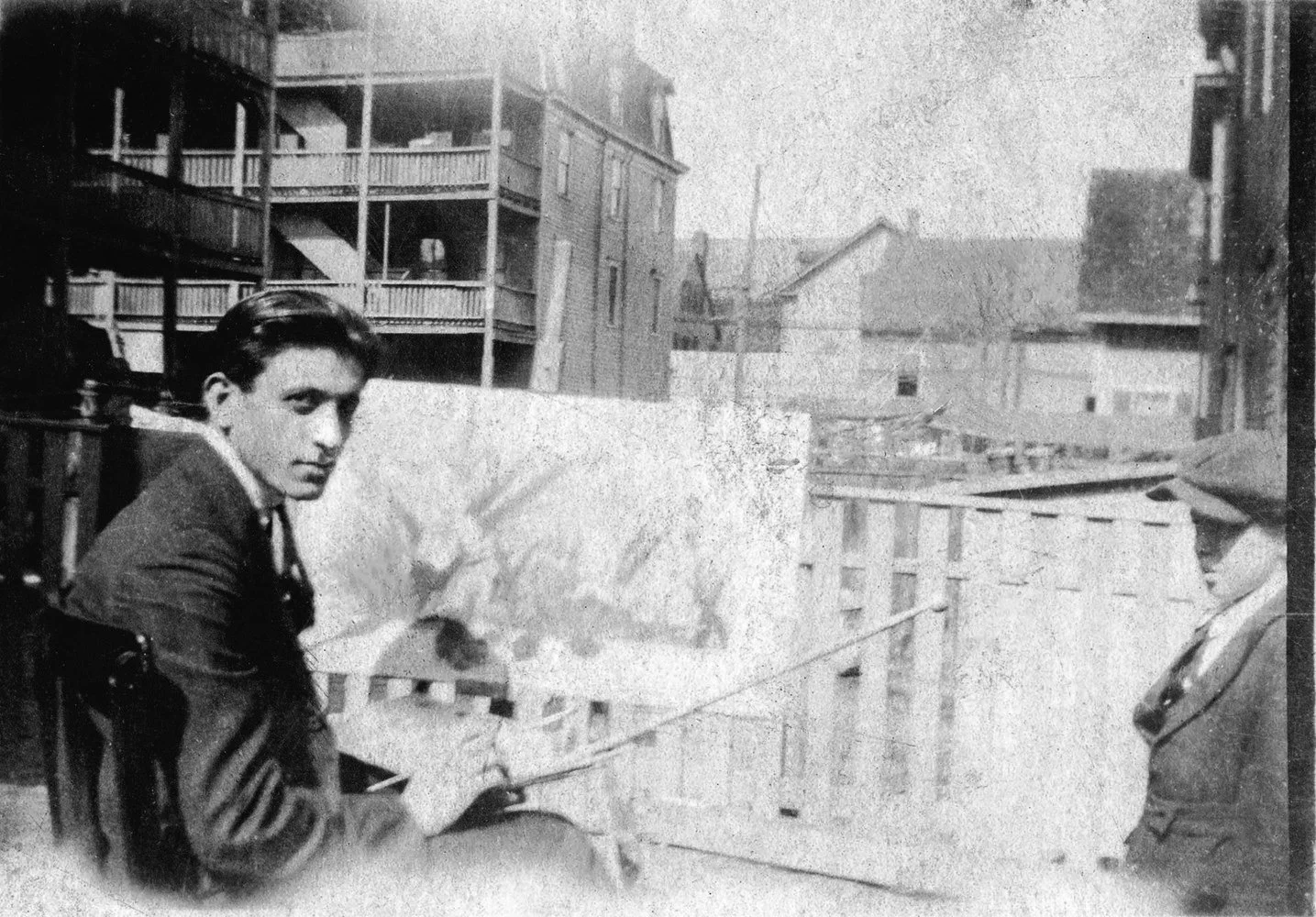Current & Upcoming Exhibitions
Arshile Gorky (born Vostanik Manoug Adoian) painting at his sister Akabi’s house on Dexter Avenue in Watertown, MA, c. 1922. Unknown photographer. © 2025 The Arshile Gorky Foundation / Artists Rights Society (ARS), New York
Opening December 12, 2025
Arshile Gorky (Vostanik Manoug Adoian, 1904–1948) played a pivotal role in shaping modern art in America. A self-taught painter, his work helped usher in Abstract Expressionism the first internationally recognized American art movement and a lasting influence on artists worldwide. This exhibition focuses on Gorky’s relationships and sense of community, from his humble beginnings in Watertown as Vostanik Manoug Adoian to his later life as a celebrated artist.
September 6, 2025 — February 28, 2026
An exhibition that celebrates the life and work of Serj Tankian—musician, visual artist, poet, composer, activist, and outspoken advocate for human rights. Inspired by his 2024 memoir Down with the System, and Tankian’s ongoing exploration of the intersection of sound, image, and poetry, The Art of Disruption “invites not just observation, but participation.”
Curated by Ryann Casey. Sponsored by Carolyn Mugar and the Alan K. & Isabelle DerKazarian Foundation.
Ongoing Exhibitions
-

Karsh: Celebrating Humanity
For viewers around the world, Yousuf Karsh defined the photographic portrait in the twentieth century. Specializing in the creation of iconic images of the world’s leading figures—statesmen, writers, actors, artists, musicians, and scientists—Karsh made images that resonated deeply with his audience.
-

Discovering Takouhi: Portraits of Joan Agajanian Quinn
“Discovering Takouhi: Portraits of Joan Agajanian Quinn,” a companion exhibition to “On the Edge: Los Angeles Art 1970s – 1990s from the Jack and Joan Quinn Family Collection,” includes Armenian artists such as Dahlia Elsayed, Jean Kazandjian, Silvina Der Meguerditchian, Ara Oshagan, Zaven Sarkissian, and Aram Saroyan. Curated by Gina Grigorian and Natalie Varbedian.
-

My Name Is Saroyan
Following the donation of Ruben Amirian’s “Homage to Mesrop Mashtots,” a 14-foot composite work celebrating the Armenian alphabet, art collector and Museum Trustee Joan Agajanian Quinn has gifted two watercolors by literary genius William Saroyan and two drawings from his son Aram Saroyan to the Armenian Museum of America. All five works are now on display in this new exhibit inspired by Armenian literary culture both past and present.
-

The Armenian Genocide
The exhibit is a stunning visual narrative of the events of the 1915-1923 Genocide, and the continuing aftermath and denial by the Turkish government over generations. The visitor will find a chronological narrative of the tragic events leading up to World War 1, the years of Genocide (1915-1923), and the continued denial to the present.
-

The Art of the Armenian Khachkar
“The Art of the Armenian Khatchkar” exhibition is located on our second-floor gallery. Since the 9th century, Armenians have used khachkars as memorials to people and events. Over the centuries, their designs became increasingly elaborate and some even became venerated as miracle-working objects. Curated by Helen C. Evans, an Academic Advisor and curator at the Metropolitan Museum of Art.
-

Stitching to Survive
Although Armenians are famed for their beautiful religious art: church architecture, illuminated manuscripts and intricate khatchkars (stone crosses), the most common form of artistic expression was through their textiles, a far more ephemeral medium. From time immemorial, Armenian women have created and ornamented clothing and created works that delighted the eye of the wearer and viewer. A bride’s worth and reputation was judged by her hand skills.
-

Objects That Transcend: Metalwork from the Garabedian Collection
Metal objects in Syria and throughout the Middle East had important and widespread use; cooking was done in metal vessels, the hands of guests were washed in metal ewers, the literate used metal inkwells, wealthy women used metal toiletries such as metal-back mirrors and cosmetic containers. These metal works were noted for their function, inventiveness of form, and fineness of surface treatment.
-

Armenia: Art, Culture, Eternity
This introductory gallery provides an overview of Armenian culture from antiquity to present-day Armenian experience here in the United States. Over fifty objects are on display, illustrating Armenia’s origins in the Asian continent, the invention of a unique Indo-European language and alphabet, the early adoption of Christianity, Armenian medieval illuminated manuscripts, and interconnected trade routes.





